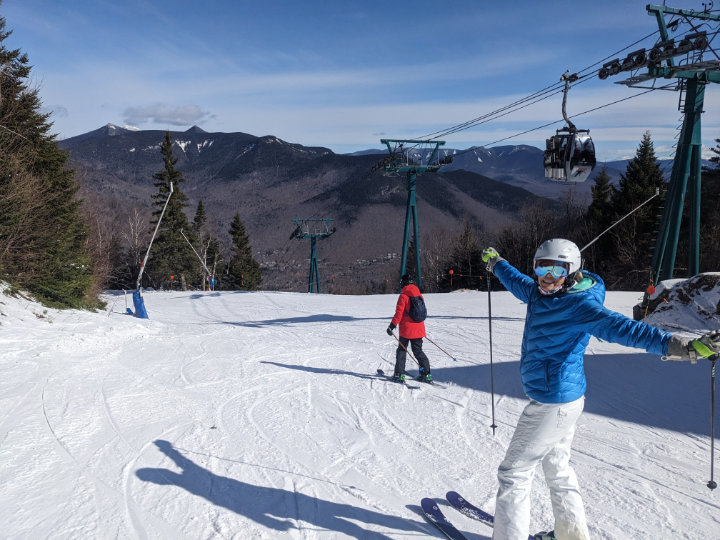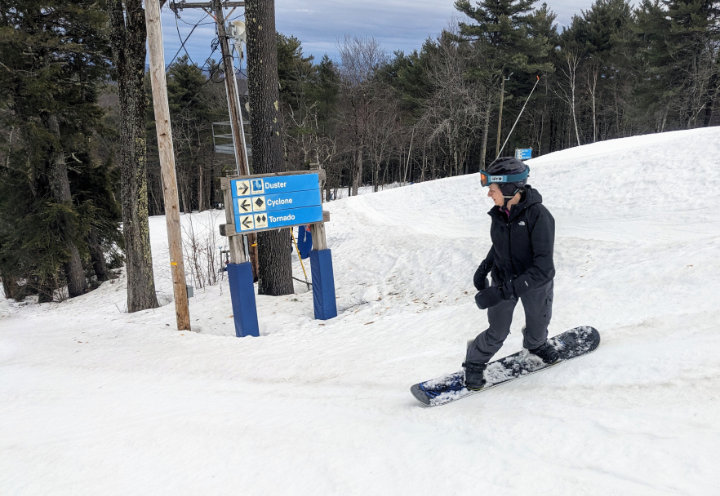Remembering 4-H Club
by Robert Hanaford Smith, Sr.
Weirs Times Contributing Writer
Girl Scouts are known for their cookies, but at one time there were also 4-H Club cookies, available in vanilla or chocolate flavors and described as delicious wafer thin sugar cookies. Each package weighed nine ounces and contained three dozen cookies. Apparently much more recently some 4-H Clubs have sold cookies for animals. I am not qualified to write about today’s 4-H clubs, but am able to relate some of what it was like to belong to the 4-H around the middle of the 1900s and how the organization helped the state’s rural youth develop good work and moral standards.
Our 4-H Hustler’s Boy’s Club in New Hampton was small, consisting of a half dozen to a dozen or so members, depending on the year. We lived in a rural area and the meetings were held in the homes of the members or the adult club leader, who, for most of the years I was part of the club, was Leonard Huckins of our town. The beginning of what would become 4-H Clubs is credited with the initiative of an A.B. Graham in Clark County, Ohio, who started youth clubs called either “Tomato Club” or “Corn Growing Club.” During the same year (1902) school agriculture clubs were begun in Douglas County, Minnesota. The clover pin with an H on each leaf made its appearance in 1910 and the youth agriculture clubs were first called 4-H Clubs in 1912. The four H’s stand for Head, Heart, Hands, and Health, emphasizing the organization’s interest in having a positive influence on every area of a young person’s life. In 1914 the Cooperative Extension System at the United States Department of Agriculture was established and since 1924 4-H Clubs were officially formed with the clover emblem and have been under the oversight of universities and county offices around the nation.
Our local club met on a monthly basis to conduct business, enjoy refreshments, and socialize (meaning talk and play games). Ours was a boys club and the organization allowed the establishment of either a boys or girls club or the combination of both. Members were to be between the ages of 10 and 21 and were required to choose one or more farm or home related projects under the jurisdiction of the State and County extension Service. Unlike many other organizations, no dues or other fees were required to belong to a 4-H Club. The officers who were elected each year consisted of a President, Vice-President, Secretary, Treasurer, and any other officer that the local club decided to add. There was one required committee, the Program Committee, to be chaired by the vice-president, but additional committees could be appointed. One year our Hustler’s Club had a “Ways and Means Committee”, and in 1954 a “Skating Committee” was appointed at the January meeting and then reported at the February meeting that “We had no ice to skate on”. In reading old reports from 1950 -51 I found that the earliest that the club’s business meetings began was 8pm; however, the starting time was more often at 8:45 or 9pm with one meeting not starting until 10pm, although it should be noted that the late meeting was a July 1st gathering with “two girls’ clubs as guests” and was preceded by a hot dog roast. The meetings were held on a Saturday night and the late start was probably attributable to some members’ responsibilities in completing their farm chores.
Club members came from families involved in commercial farming as well as from homes where the agricultural involvement was mainly to provide food for their own use, but every member was expected to sign up for a particular project(s) that they would engage in during the current calendar year. A publication from Purdue University on Planning the 4-H program had suggestions for each month of the year. December ideas for demonstrations and talks included A First Aid Kit In The Home, Wrapping Christmas Packages, Caring For Chapped Hands, Keeping A Scrapbook of 4-H Work, and Trapping Fur Bearing Animals.
Ruth Weston was the Belknap County 4-H leader when I first attended the club and after she retired Charles Proctor took over the position. The County agent worked with the clubs and met with them on occasion to assist and inform the members of opportunities available to them for education and participation in activities beyond those provided on the local club level. In 1955 there was a County Tractor Club, a County Advisory Council, a Senior Leader’s Association, and opportunities to apply for or work towards receiving a college scholarship. The County Club agent led a radio program twice a week on station WLNH, and encouraged club members to assist him in the presentation.
One club project that all members were asked to participate in was titled “How I Act and Think” where the individual was to try to improve their actions and thoughts and to rate themselves on a monthly basis by answering yes or no as to their success in following a list of thirteen habits. Those included having a perfect attendance at school and 4-H Club, attending church regularly, having a good scholastic record, showing thoughtfulness for others, earning money and saving some, thinking of the danger from alcohol and narcotics and avoiding both, and being courteous in manner at home and in public. A 1956 4-H circular on gardening would not be considered appropriate for today’s gardener because it promotes the use of DDT to control insect pests. DDT proved to be harmful to other wildlife species. Another brochure explained the proper use of the flag of The United States of America. I had the opportunity to attend the 4-H summer camp at Bear Brook State Park in Allenstown with other club members from around the state. Exhibiting items at fairs in the area was another of the activities involved with being a club member.
It was customary to open club meetings with the flag salute (reciting the pledge of allegiance to the flag of the United States) and the 4-H pledge. It should also be noted that there were “achievement nights” when awards were presented to recognize the accomplishments of 4-H members. A poem written by a C.B. Smith highlighted some of the goals of 4-H as being to “point the better way”, “to teach the larger life”, “to encourage a soul ”, “to look beyond the plow ”, to “ teach a man’s full part in community and town, in assembly and mart ”, and its goal of achievement is the inspiration- the making- of men.”





